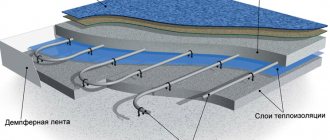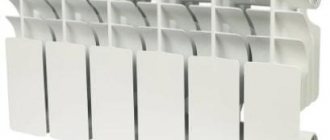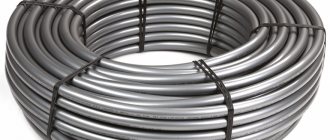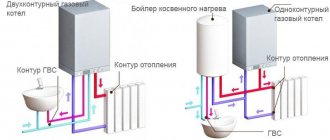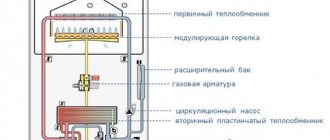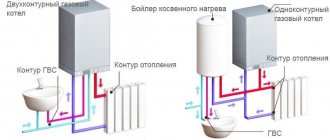Residents of country houses are accustomed to taking heating seriously. To live a long, cold winter in comfort, you can combine several heating systems. For example, use regular radiators in normal mode, and during frosts connect energy-saving infrared ceramic heaters. We'll talk about them today
Electric heaters are not particularly popular among Russians, mainly due to the high cost of operation. No matter how much the device itself costs, you will have to pay much more for electricity. But recently, heating devices have appeared on the market that do not cost the user so much. We are talking about infrared ceramic panels.
Infrared heaters as such will not surprise anyone today. They are economical and effective, but they have a significant drawback. Devices of this kind cool down immediately after switching off. What if you combine an infrared emitter with a material that can accumulate heat?
Design of a ceramic panel
This is the path followed by the creators of ceramic heating panels. Clay has served humanity for many thousands of years, and it was not without reason that our ancestors cooked food in ceramic dishes. This material, firstly, can withstand prolonged heating without emitting toxic fumes, and secondly, it cools slowly.
So, what is a “clay” heater? In general terms, this is a flat metal panel with an electrical cable laid on it, which, in fact, serves as a source of infrared energy. A ceramic plate is mounted on top of it, accumulating heat.
Additionally, the devices are equipped with a fan. Its task is to force cold air to the heating element and distribute heated air throughout the room. Thus, convection heating is added to radiant heating. The advantage of this solution is an increase in the heating effect, the disadvantage is additional noise, which can cause inconvenience, especially at night.
The operating temperature of the front side of the ceramic panel is 75-80ºC, which minimizes the risk of burns from accidental touch
But let's return to the main technology. Infrared panels do not heat the air around them (like conventional radiators), but the objects around them. This consumes much less electricity than is needed, for example, for an oil heater. This means that the operation of “infrared” devices is relatively inexpensive. And if you consider that even after switching off, the ceramic panel continues to give off heat, the savings are quite noticeable.
Let's give specific numbers. The power of the ceramic panel ranges from 300 to 990 W depending on the size. Compact models do not consume much more electricity than a regular office computer. And if you compare the costs of an infrared device with convectors and fan heaters, the savings reach 30% or more.
If it is a model with a thermostat, you can achieve even more impressive results.
However, the cost of the heating device itself must be included in the heating costs. The price range is surprisingly wide. As of December 2022, an infrared heating panel costs on average from 2,800 to 17,000 rubles. On the market you can also find models costing 30,000 rubles, equipped with the latest technology, but they are not in high demand.
Ceramic panel with print
It is also worth paying attention to the design of heating devices. All ceramic “infrared” devices have the form of a panel. The front side can be printed with a pattern or texture of some material, but for the user its absolute smoothness is of much greater importance. The fact is that all convective heaters, along with the air, drive dust around the room. It does not linger on a perfectly flat surface, which means that maintaining the heater will not be labor-intensive.
According to the type of installation, all ceramic heaters are divided into two types - floor and wall. In the first case, the device is fixed using the supplied brackets, in the second - it is installed on legs or wheels.
If the heater will be used as a floor heater, it must be equipped with an option to turn off in case of overturning
What are ceramic infrared heaters?
A ceramic heater is a new word in creating energy-efficient heating systems without laying pipes and other complex manipulations. It can be used independently or in combination with other heat sources: wood stoves and fireplaces, thermal curtains, convectors. As a rule, the power of such devices does not exceed 1000 W.
The main feature of ceramic heaters is the gradual release of heat. It flows evenly without drying out the air flow. Ceramics are environmentally friendly and natural, do not emit hazardous substances into the atmosphere, and are hypoallergenic. Such heaters have a wide variety of designs; there are differences even in the method of heat generation. For example, ceramic wall panels do not distribute heat by convection, but transfer it to objects around them.
Why is it needed and where is it used?
Heating equipment is needed everywhere:
- Houses,
- At work,
- in the country,
- in the garage
- In workshop.
Devices operating on the principle of infrared radiation can also be used outdoors:
- to create comfortable thermal zones in summer cafes, pavilions, and recreation areas;
- heating terraces and verandas;
- creating a thermal curtain in the entrance areas of public institutions, shopping complexes, and places with high traffic;
- in greenhouses and greenhouses.
How it works: device principle of operation and pros and cons
Infrared heaters are fundamentally different from convector-type heating devices: they heat not the air, but the surfaces of objects. Those, in turn, begin to radiate heat into the space around them. In this way, a microclimate that is comfortable for humans is formed.
Moreover, it is limited not by the walls of the room and other obstacles that retain warm air, but by the zone of influence of infrared radiation. It stably maintains the temperature set by the user. This provides local heating.
This capability of infrared devices is often used when performing work in unheated garages and construction sites.
The latter are autonomous, the housing provides space for installing a container with fuel (gas cylinder), a burner, and has a protective grille.
But the operating principle of both types of devices is the same and is ensured by several mandatory design elements:
- heating element;
- emitter;
- reflector;
- a layer of thermal insulation;
- thermostat (thermostat).
The operating principle is as follows:
- by supplying power or burning gas fuel, the heating element is heated;
- it, in turn, transfers heat to the emitter;
- radiation of infrared zones begins in the range determined by the material of this structural element (emitter);
- waves pass freely through the air and are reflected from objects encountered along the way;
- at the same time, they penetrate to a certain depth of the surfaces of obstacles, causing activation of the movement of molecules with a corresponding release of heat.
Objects located in the infrared zone heat up and transfer part of the thermal energy to the air. The latest generation of IR heaters are equipped with a heating element made using MAO (micro-arc oxidation) technology. These devices are characterized by a long service life (at least a quarter of a century) and high heating efficiency.
pros
Fire safety of electric models and multi-level protection against ignition of gas appliances.
Low heating of the metal body, which eliminates the risk of unpleasant sensations and burns when touched.
Modern design.
Convenient controls.
High-quality local heating of poorly insulated rooms and outdoor spaces.
Two or more power modes.
Possibility of floor, wall and ceiling installation.
Minuses
Slower heating of rooms than when using convector-type devices.
The need to maintain the distance recommended by the manufacturer from the place of installation of the heater to household and electronic appliances, furniture.
What is a ceramic heater
First, let’s dispel the misconception floating around the Internet that “what distinguishes a ceramic heater from other heating devices is the presence of a ceramic heating element” (the quote is given verbatim). And this is what the vast majority of authors of popular educational materials and “experts” think. But this is complete nonsense. How can you heat a dielectric, which includes ceramics, red-hot with electric current? We send those who have doubts to look at high-voltage power lines - they have ceramic insulators.
In fact, the adjective “ceramic” in the name of the device is collective, including four heating devices that are different in design, energy used and method of heat transfer. Ceramic in these devices can be:
- plates - heat capacitors with subsequent radiation in the IR range;
- monolithic panel containing a heating element spiral made of metal or carbon fiber (carbon);
- gas burner.
The different designs of heating devices require consideration of each type of heater separately - their advantages and disadvantages, technical and operational indicators and scope of application are too different.
Infrared heaters
An infrared instrument is usually associated with a reflector. But not in this case - the hot spirals are hidden behind a ceramic plate. This technical solution was proposed by technologists to extend the heating time of the room after turning off the device - the heated ceramics will maintain heat in the house for some time.
Structure. The device consists of a metal or plastic body, a tubular electric heater (TEH), a reflective screen on the back wall and a ceramic plate covering the heater.
Scheme of a ceramic infrared heater. 1 — tubular electric heater 2 — ceramic panel 3 — reflector 4 — housing
Principle of operation. After switching on, the heating element instantly warms up and begins to emit IR rays. Some of them pass through the ceramic plate and heat the hard surfaces in the room. The other part gives energy to the plate. It heats up to a certain temperature and also begins to induce infrared radiation.
Panel heater
The idea to create a monolithic ceramic heater came from quartz heating devices. The fragility of the stove created many problems: it cracked due to careless handling, there were difficulties when turning on additional options (thermostat, timer or climate control) - there was nowhere to attach them.
By adding white clay to ceramic sand, manufacturers received a ceramic-quartz heater with the same performance characteristics, but a durable plate. The new properties of the panel made it possible to create a new generation ceramic heater that works as a heating device in the cold season and as a fan in the summer. The structure and operating principle of such a heater can be seen below.
At the same time, panels are produced that are structurally different from ceramic quartz devices.
Structure.
Panel ceramic heaters consist of:
- from the front panel (made of baked clay);
- a tubular heating element (in a quartz device the spiral is soldered directly into the plate);
- heat reflector;
- metal back cover.
In a number of models, a profiled heat exchanger is located in front of the heat reflector, which provides heating of cold air.
Diagram of a panel ceramic reflector.
Principle of operation. The ceramic panel works as follows:
- after turning on the device, the spiral in the tube instantly heats up and begins to emit heat rays in the infrared range;
- the front panel heats up due to IR radiation;
- Having reached a certain temperature, the ceramics themselves begin to emit heat waves;
- the surface of the walls, ceiling, floor and furniture slowly warms up;
- at the same time, cold air, passing through the heat exchanger, heats up and, in accordance with the laws of physics, tends upward, including the convection heating method;
- The surfaces heated by the rays begin to heat the air around them.
As a result, the room is heated simultaneously in two ways: convection and infrared.
Ceramic fan
The idea of creating a hybrid of a fan heater and a monolithic quartz battery is implemented in ceramic fans. Depending on the type of fan (axial or tangential), the devices have different structures.
Structure of a ceramic heater with an axial fan. The compact device consists of a metal or plastic case, a built-in fan, ceramic tubes with a heating element inside (tungsten, carbon fiber) and a control unit. The diagram is shown below.
Ceramic fan diagram. 1 - body; 2 - ceramic tube with a hermetically sealed heating element made of tungsten or carbon; 3 — built-in fan; 4 - control unit.
Structure of a ceramic heater with a tangential fan. A ceramic heater with a tangential fan (allows a large volume of air masses to be driven through the heat exchanger) is designed for heating large areas. Therefore, it is large, heavy, and has great power. The highlight is that it is presented in the form of a not very thick slab. This design allows you to install the device on the floor, hang it on a wall or ceiling. It is difficult for people unfamiliar with the unusual fan to imagine this.
Tangential fan.
The heater consists of a housing, a ceramic block with heating elements soldered inside (see photo), a tangential fan and a control unit.
Ceramic grill with heating elements inside.
Principle of operation. The operating principle of both types of ceramic fan heaters is the same - cold air is sucked into the device, where it is heated from a ceramic grille heated to a temperature of over 200oC. After this, it enters the room, heating it throughout the entire volume. This technology can heat a room in a few minutes.
This is how a ceramic fan works.
Gas heaters
All types of quartz gas heaters have the following design elements:
- frame;
- diffuser (in the picture, mixing pipe);
- mixing chamber;
- combustion control sensor (thermostat);
- piezo ignition;
- ceramic stove with a system of burner holes.
Such a device can operate both from the main gas pipeline and from a cylinder.
Principle of operation. Gas enters the heater under pressure. The expansion pipe (diffuser) slows down the speed of movement while simultaneously increasing the volume. From the diffuser, the gas enters the mixing chamber, where it is mixed with the primary air flow. Here the air mixture is heated, which improves combustion results. Through a system of holes in the ceramic stove, gas enters the combustion zone, where it meets the secondary air flow.
The burners are designed in such a way that almost all the heat from the burned gas is accumulated in ceramics, which begins to emit infrared waves. Moreover, the higher the heating temperature, the longer the wave. It is known from the school physics curriculum that longer waves have higher energy and, therefore, will heat the room faster.
Device types
All existing ceramic heaters can be divided into several categories. The main distribution concerns the power source used. This can be done by liquefied gas or electric current.
- Gas appliances. Not every owner of a country house knows that gas energy-saving heaters exist. Meanwhile, today they are widely used for heating non-electrified dachas and country cottages with weak network throughput. The heating temperature in such devices reaches 900 degrees Celsius, they are more powerful, and can easily and quickly create a comfortable atmosphere in the room.
- Electric heaters. The most common option is ceramic infrared heaters, which combine two types of thermal radiation. Initially, ceramics were used here as a coating for spirals; a model with a thermostat made it possible to determine the intensity of heat supply. Today, inside the body of such a device there are ceramic panels, onto which the heating is directed. The ability of such heat exchangers to retain heat for a long time is complemented by convection - a fan. As a result, the distribution of the heat wave is more uniform and gradual.
- Ceramic panels, IR heaters. Inside the product there is a base - a housing with a polymer coating, on which an electric heating cable is spirally located. A ceramic panel is located on top, ensuring a gradual and effective distribution of the generated heat. Since the fastening to the wall is not carried out tightly, there is an intense exchange of warm and cold air flows.
Owner reviews: advantages and disadvantages
| Advantages | Flaws |
| Low energy consumption and high efficiency. According to reviews, when using such heating devices, heat costs are reduced by 2-3 times compared to gas, and by 3-4 times with convector-type devices. | Almost beyond repair. They have no moving parts during operation, but the risk of breakage is quite high. The following can lead to device failure:
|
| The device does not dry the air or burn oxygen from it. These factors are one of the main disadvantages of fan heaters and most convector-type heaters. Even after prolonged operation of the device, you will not feel dry mouth, there will be no redness in your eyes, you will breathe easily and freely. | Risk of getting burned. Despite the fact that the ceramic panel in heating devices is the safest to use, it heats up to high temperatures. Therefore, it is not recommended to install it in places where children have direct access. And adults should be careful too. There are devices on sale that are equipped with special protection that prevents even accidental contact. |
| They can be used to organize both auxiliary and main heating. One device is capable of providing local heating of a specific room, and several - the entire house or apartment. | |
| After switching off, the device will continue to give off heat for a long time, preventing the temperature in the room from dropping quickly. When turned off, it heats for another 15-20 minutes and does not consume electrical energy. | |
| Can be used for heating rooms with high humidity levels. It can be installed in bathrooms, saunas, toilets, balconies and loggias. | |
| High level of environmental friendliness. The device does not emit any gases or combustion products into the environment. | |
| Stylish attractive appearance. A wide range of devices allows you to choose a device that will harmoniously combine with different interiors of the room. | |
| Lightweight and easy to install and maintain. There is no need to carry out systematic maintenance, including that associated with replacing worn-out elements of the heating device. |
As users note, when purchasing a heating device, the advantages of a ceramic panel play an obvious role in their favor. And deficiencies during proper operation do not at all affect the functionality of the device.
Placement method
All ceramic heaters are divided according to one more important indicator. The placement method determines the comfort in using the equipment.
There are several options:
- Floor. May appear as a column or cylinder, a rectangular block mounted on an electrically powered turntable. The system is equipped with convection; the power of such heaters varies in the range of up to 2000 W. Gas models are produced mainly in floor-standing versions, have a durable, heat-resistant body, and a handle for transportation.
- Wall. In the classic version, it looks like an air conditioner or a thermal curtain, but is mounted at the bottom of the walls. The warm air rising due to convection is evenly distributed in the room. Ceramic panels are also produced, placed by analogy with conventional radiators, on the walls under windows or in any other places. They have a large heat transfer area and are equipped with remote thermostats.
- Ceiling. This heater looks the same as a wall panel, is mounted on the ceiling, and can be electric or gas. Thanks to infrared radiation, this technique provides better heat transfer, and the heating principle itself is similar to that provided by the sun's rays. Objects in the room first heat up and then give off heat. These models are the most versatile; they are used in greenhouses, industrial premises, and residential buildings.
- Desktop. Miniature version of floor models. Designed for local heating of a small room or a separate part of a large room.
The wavelength of the heating device also matters. This is relevant for all infrared heaters, since it determines the range of propagation of thermal energy.
The following options are available:
- shortwave – for rooms with ceiling heights from 6 m;
- medium wave - designed for a wavelength of 3-6 m; long wave - up to 3 m.
The best and most famous models: characteristics and prices
"Nikaten NT 500"
Consumers describe it as a reliable, efficient device, while the panel puts a minimal load on the network and can be used in medical and children's institutions (certified for specialized premises).
It uses energy sparingly, heats up instantly, does not dry out the air, and the possibility of dust and insects burning on its working surfaces is excluded due to their special coating. Has a humidity control function. During use, condensation does not form, which prevents the growth of bacteria and the spread of fungus. The device has a long service life.
"PEON Thermo Glass A-06"
The model is designed for installation in suspended ceilings. Its heating element is made of tempered glass, which significantly increases the heat transfer of the device. Textured ceramic painting expands the heat dissipation angle. This ensures increased efficiency of the device, the ability to maintain the optimal temperature for a person over a larger area than other devices of the same power. In winter, it is recommended for heating small rooms up to 6 m2, and in the off-season it is suitable for larger areas - up to 12 m2.
The main advantages of the model, according to independent experts:
- energy savings (up to 40%);
- stylish design;
- does not take up useful space on the floor or wall;
- adjustable heating mode;
- ceiling cassettes are installed in such a way that they are inaccessible to the consumer’s hands;
- Easy installation, no need to purchase additional fasteners.
In addition, “PION Thermo Glass A-06” is considered a safe heating device, which is confirmed by certificates from Russia and Europe.
Teploceramic TCM-RA 550
One of the best ceramic infrared heaters for a private house or apartment. The device has a high level of fire safety; it can be installed even in rooms with a high risk of fire. The model is not susceptible to voltage surges.
It has a heating control system based on the temperature of both the panel itself and the air, which allows you to accurately regulate the indicators. The sensor on the heater allows you to set the limit in the range from 40 to 95°C. When the set temperature is reached, the system automatically turns off. The operating principle of the external sensor is exactly the same, only in this case the role is played by the air of the room where the Teploceramic TCM-RA 550 is located, and the temperature range is from +5 to +35 °C.
Xiaomi Smartmi Smart Heater
The smart device can be controlled remotely via a smartphone using special software. This allows you to turn on Xiaomi Smartmi Smart Heater before you arrive home and create a cozy and comfortable environment.
The heater has a protection system against overheating, moisture, and falling. This significantly increases the safety of using the device.
BALLU BIGH-55 F
It is a gas ceramic infrared heater. It has an autonomous power supply, a built-in CO2 monitoring system and an emergency shutdown when tipping over. At the same time, the heater is not dependent on a third-party source of energy supply, gas or electricity outages. All that is required from the user is to periodically refill the cylinder. By the way, the special place where it is located is hidden inside, which does not spoil the beautiful appearance of the heater.
Tips for choosing
Now let’s look at how to choose ceramic heaters for your home or garden, and whether it’s worth buying the most economical models, or is it better to spend money on powerful options:
- Pay attention to power. It is believed that to effectively heat a room you need at least 100 W per m2. Ceramic panels rarely exceed 500 W, but due to energy savings, one such “battery” can heat up to 10 m2 of area. It is better to choose convectors according to the standard formula - 1000 W for every 10 m2.
- Type of instalation. In small-sized housing, the best option would be to choose wall heaters. In a living room, it is better to use floor-mounted models as an auxiliary heater. Ceiling ones are suitable for installation in loft-style spaces with high ceilings.
- Availability of built-in thermostat. With its help, you can set and maintain the air temperature in a given temperature range.
- Source of energy. In a house where there is no electricity or the network cannot support the connection of several powerful appliances, it is better to use gas heaters. They are also suitable if the room area exceeds 30 m2. Electric panels should be placed in a room 2-3 at a time - this is enough for heating, and the power will not exceed 1000 W.
When should you choose a ceramic heater?
Despite the fact that prices for ceramic heaters in general are overpriced, it is still advisable to purchase them for heating your home. Firstly, they have great power - they can be selected for any room. Secondly, they are economical. The additional purchase costs will be returned in savings on electricity or gas costs.
Thirdly, ceramics allows you to obtain a beautiful texture on the surface of the panels. Fourthly, different power, sizes and weights allow you to satisfy any desire: to heat an open or semi-closed space, move from room to room or transport to the country house and back, install in a damp room (bathroom), heat a tent in the forest or on a lake in fishing time and much more.
Many powerful models are equipped with remote controls, which is an additional plus to the choice. There are plenty to choose from for specific operating conditions.
Finally, a few recommendations from heating experts.
- For small rooms, wall-mounted models are best suited to save space in the room.
- Before purchasing, be sure to calculate the heated area. The power of the device is calculated based on 100 W per 1 m2.
- The heating time is determined. If it’s a day or more, you need a thermostat.
- In non-residential premises, heating with gas heaters is the cheapest option.




